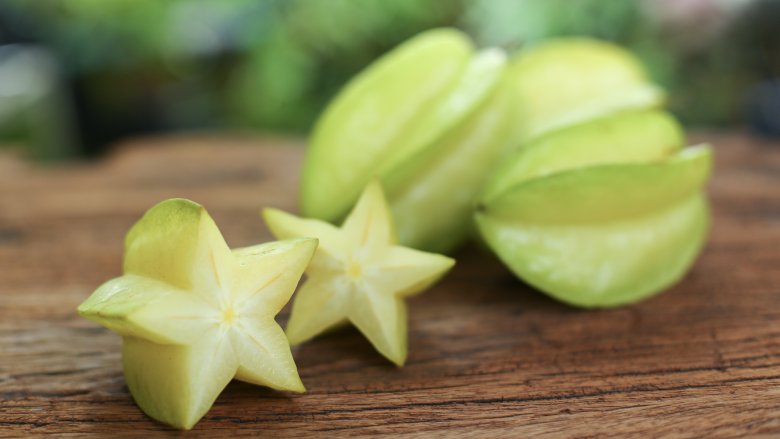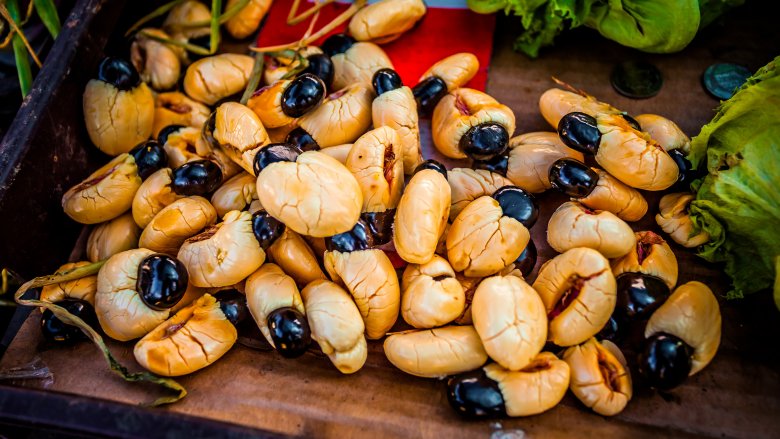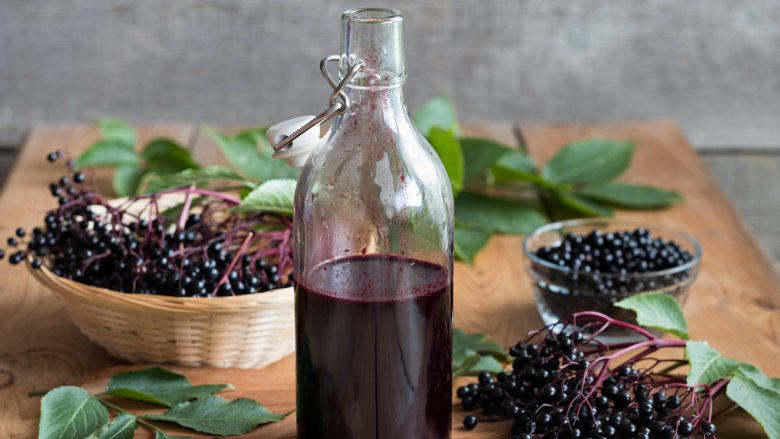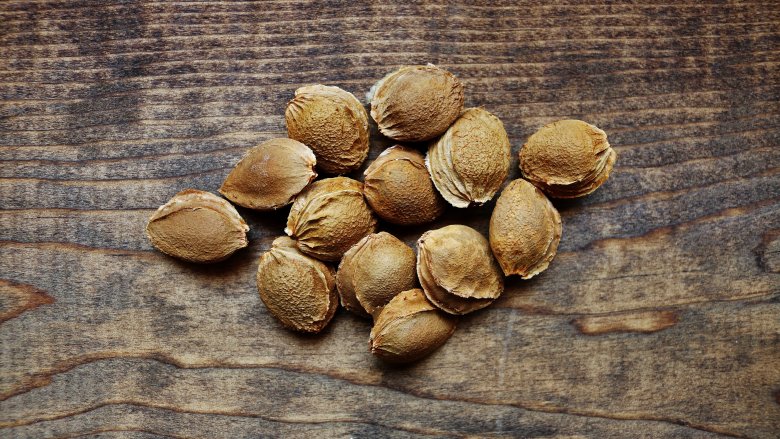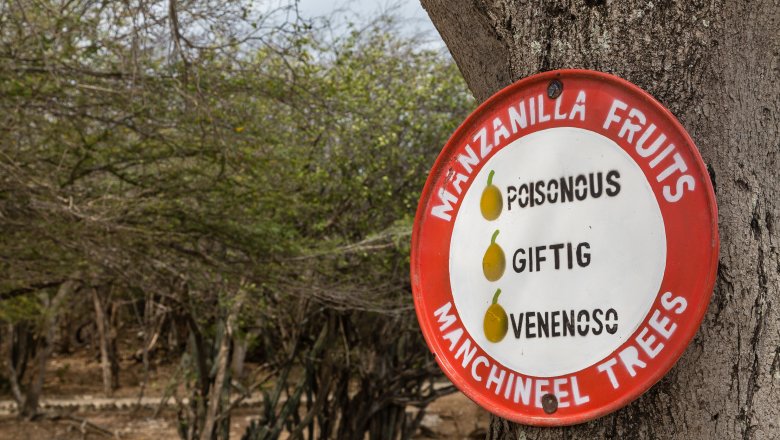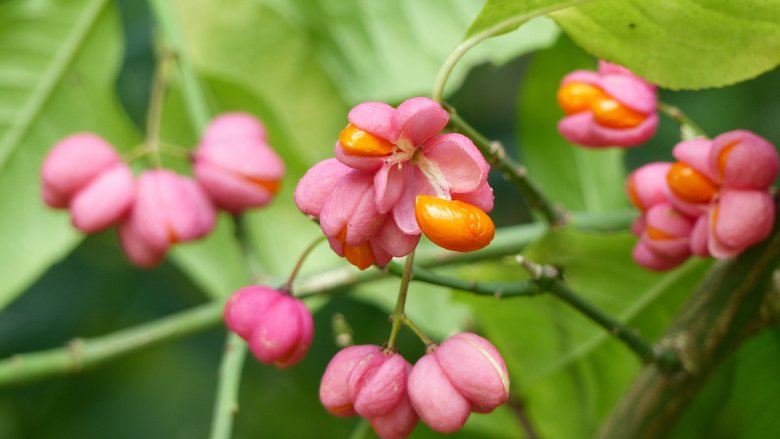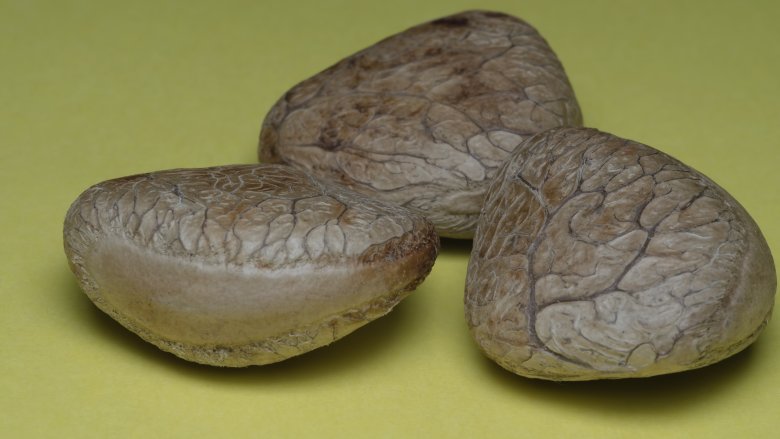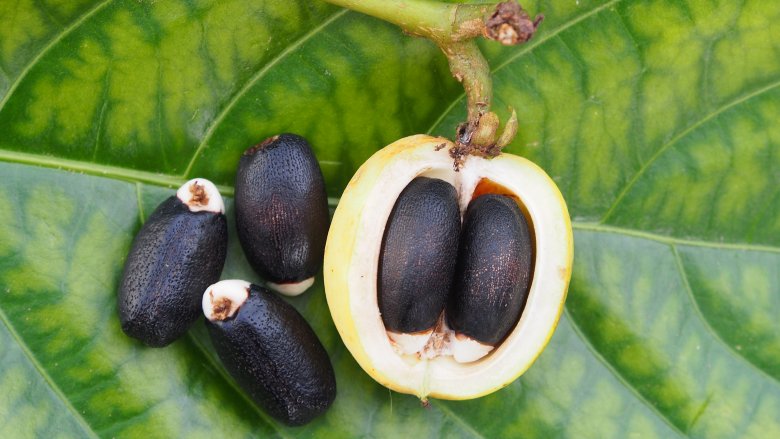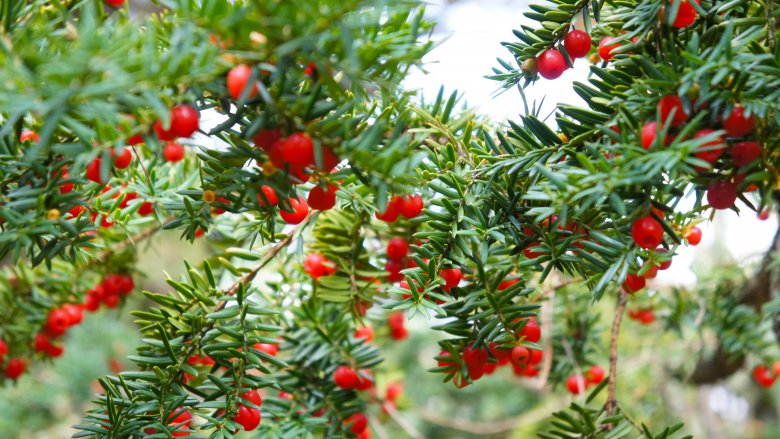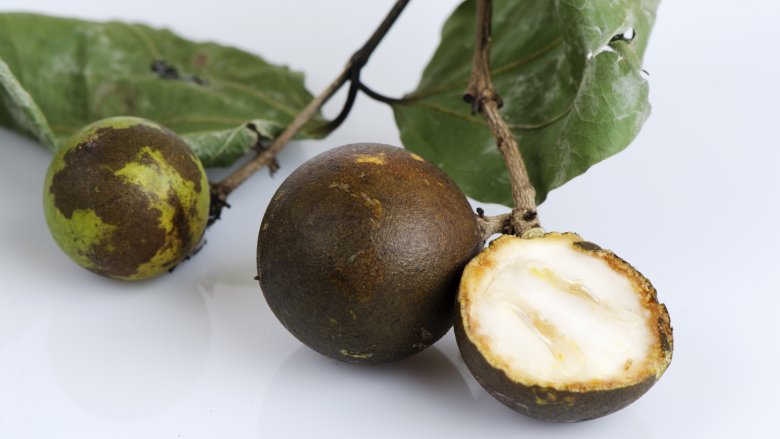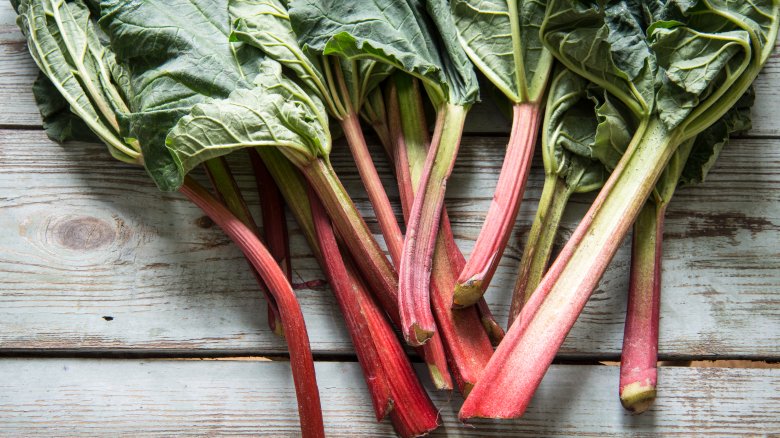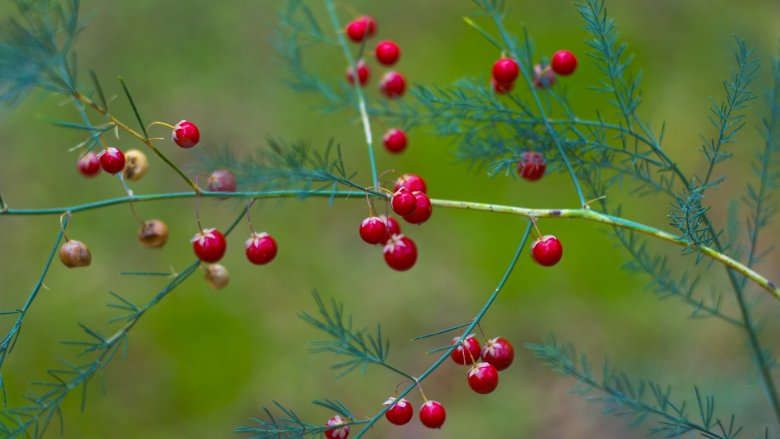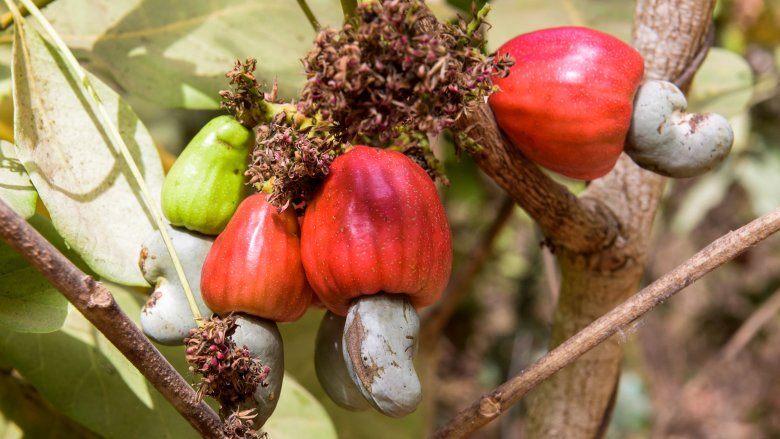The Most Dangerous Fruits In The World
With the average life expectancy around the world slowly rising (its getting up to 90 in South Korea!), all of us have some forgotten souls to thank — all those folks who came before us who figured out which fruits and plants are poisonous. It wasn't that long ago that a hungry traveler might think nothing of popping a sweet-looking berry in their mouth as they ambled down a garden path — only to wind up dead a few miles down the road. Even more amazing than these long-lost souls who gave their lives? The ones who knew these plants were poisonous, yet persisted in harvesting, boiling, roasting, and preparing them in such a way, that they discovered there was a non-poisonous use for the plant after all.
So, which fruits around the world are the most dangerous? Some you may have never heard of, some may be a vacation treat that you had no idea could have deadly side-effects, and some might be in your very own backyard.
Yellow star fruit
Ever had a star fruit? They are actually pretty tasty, and, according to Authority Nutrition, have a few health claims to boast about as well. Star fruit is low in calories, high in fiber, and loaded with vitamin C. Seems like there's a lot to love about this sweet and sour little fruit with the edible skin.
Unfortunately, for anyone with weak kidneys, star fruit also has high amounts of oxalates. That might not make star fruit a complete no-no for you, but it's a fruit you should definitely ask your doctor about if you've ever had kidney stones or any kidney issues. In some cases, eating too much star fruit can lead to kidney damage, seizures, and even death.
Folks on prescription meds should also be cautious — much like grapefruit, star fruit can interact with medications — so check with your doctor or pharmacist before imbibing.
Ackee fruit
I have enjoyed ackee fruit more than once when vacationing in Jamaica, and never knew I was eating one of the riskiest fruits on the planet. It turns out that Jamaica's national fruit, if not prepared and eaten properly, can induce what's been called Jamaican Vomiting Sickness, which can even lead to coma, hypoglycemia, or death. Yikes. Looks like I'll be sticking with pina coladas with my breakfast.
Ackee fruit is toxic when unripened, containing a poison called hypoglycin. Even when ripe, the seeds remain toxic, meaning you definitely want to get your ackee from a person who knows their way around this challenging fruit.
Elderberries
You always have to wonder how many people tried different ways of consuming a poisonous plant before they figured out just the right way to eat it without getting sick or dying. Just one of the many examples of this kind of plant would surely be the elderberry plant, in its many varieties.
Most of an elderberry plant is poisonous, containing a cyanide-inducing glycoside in the roots, stems, leaves, and seeds. The poison will cause a build up of cyanide in the body which can cause vomiting, diarrhea, coma, or death. The berries also contain a small amount of the poison, located in their small seeds, which is destroyed when the berry is properly harvested and cooked. Once cooked, it can be used in syrups, jams, pies — you name it. It can even be made into elderberry wine. Let's raise a glass to all those before us who suffered the elderberry's deleterious effects so we could enjoy it safely.
Apricot kernels
Located within the pit of an apricot, you'll find a smaller kernel that looks a bit like an almond. To reach it, you'd have to break through the hard pit, which makes you wonder why anyone would bother. But people have, and apricot kernels have been used for years in some cultures for cooking. The problem is, in high enough doses, they're poisonous. Due to many anecdotal stories and rumors over the years, there are many folks out there who also believe that the small seed of an apricot can cure cancer.
Amygdalin, also called laetrile, is the substance found in the small, apricot kernel. It's converted into cyanide in the body, but that hasn't stopped it from being marketed as an alternative medicine, which is sometimes called vitamin B17. In high enough doses, amygdalin can cause the body to produce enough cyanide to lead to nervousness, insomnia, low blood pressure, and death. The sale of laetrile is now illegal in the US, and the European Food Safety Authority warns of the danger, particularly in Turkey, where apricot seeds are commonly eaten, frequently resulting in cyanide poisoning in children.
Manchineel
The conquistadors referred to the fruit of this toxic tree, found on the Florida coast and throughout the Caribbean, as "little apples of death." But it's not just the deceptively sweet fruit, that resembles a green crab apple, that can kill you. The manchineel tree is so toxic, that pretty much every part of it can seriously mess you up. The milky sap that oozes from the tree can blister and burn the skin on contact, and the fumes from its burning branches and leaves can lead to blindness if you happen to be downwind of the world's most poisonous bonfire. This tree is so nasty, that the Guinness Book of World Records declared it to be the most dangerous tree on the planet.
Eating just one bite of the manchineel tree's "beach apples" can cause vomiting, damage to the digestive tract, and death. The sap of the tree is said to have been the end of famed explorer Ponce de Leon, who was hit with a poison-manchineel arrow fired by the Calusa fighters whose land he sought to colonize.
European spindle
The European spindle is a tree found in parks, forests, and alongside roads all over Europe. In the autumn, the tree develops pinkish-red pods, that, when ripe, burst open into tantalizing white seeds with an orange coating. These colorful pods, unfortunately, are filled with several glycoside poisons, which, if eaten, can cause vomiting, dizziness, hallucinations, kidney failure, and death. The symptoms take a full 12-18 hours for onset, which means a sick person might not even remember which poison tree they ate the berries from once symptoms begin. In European folklore, an early flowering of the European spindle tree was a sure sign that an outbreak of the plague was on the horizon. The berries of the tree are not entirely unuseful, however. The oil from the seed was a successful treatment against parasites, lice, and ticks.
Pangium edule fruit
Native to Southeast Asia, the pangium edule plant is a tree that develops a large, brown fruit that is often called a football fruit. Used in many Indonesian dishes, football fruit is another example of a fruit that you really hope the chef knows what they are doing with, because the large seeds, as well as the leaves of the tree, are poison. Filled with hydrocyanic acid, the toxic plant and seeds can cause sleepiness, delirium, and death.
Of course, that hasn't stopped people from finding uses for these poisonous parts. When the seeds aren't being used for rat poison, they're boiled down or fermented until the poison is removed, and made into a cooking oil. In Philipine alternative medicine, it has been used to kill parasites, treat boils, and preserve fish.
Jatropha
Due to the hardy nature of this tree-like shrub, you can find jatropha trees in all corners of the world with tropical or sub-tropical climates. The Indian variety of the plant has proven to be particularly problematic, with high incidences of poisoning in children who are drawn to the sweet, yellow berries, with their poisonous black seeds that are filled with the toxin, ricin. When ingested, jatropha seeds can cause vomiting, diarrhea, and kidney damage.
Used for years as medicine for colic, cramps, and constipation in rural villages, jatropha enjoyed 15 minutes of fame in recent years when it was forecasted to be the next big thing in biofuel. Sadly for jatropha, and the many farmers who invested in planting it, jatropha as a biofuel was a bust, leaving the world with that many more poisonous plants to contend with.
Yew berries
The yew shrub is a popular plant in home landscaping in many parts of the world, due to its ease of care, evergreen nature, and drought-resistance. I have a few of them in my yard here in New Jersey. The plant produces little red berries that contain a seed which is highly poisonous, as is the rest of this very toxic plant. The poisons found in the seeds and plant are taxins, and the taxol found in the western variety of the yew is even used to create a drug that treats breast cancer.
Some animals and birds seem to be able to consume the fruit of the yew without breaking the seeds, passing the seeds intact in their droppings. Us humans should never risk eating this highly toxic berry, however. Just a few seeds can cause convulsions, rapid collapse, and death.
Strychnine
The strychnine tree may be native to Australia and Southeast Asia, but it was in Europe where it really saved the day, as the toxic plant was the chief ingredient in the rat poison used to curb the scourge of the bubonic plague.
Other common names for the strychnine tree are "snakewood" and "poison nut," referring, no doubt, to the toxic berries the tree produces. It's been used for centuries for medical uses, but is perhaps most well known for being the murder weapon of choice for villains in works of fiction, as well as in real life over the course of history. Ingestion of strychnine leads to manic convulsions of the body that can be so severe that muscle tears away from bone. Victims are said to have achieved bodily positions that would not be possible otherwise, with death following from exhaustion or cardiac arrest.
Rhubarb
Rhubarb is technically a vegetable, but it's usually prepared like a fruit, so we'll include it in this list. My grandmother frequently made strawberry-rhubarb pie in her home kitchen, and I remember how horrified I was when she casually mentioned to me that the leaves of the plant, which my grandfather grew in his garden, were poisonous.
The glycosides and oxalates in rhubarb's leaves can cause burning of the throat and mouth, stomach pain, kidney troubles, and even coma if eaten in large quantities. Deaths are rare, but a few have been reported. It is the stalk of the plant, alone, that is edible, lending a sweet and sour flavor to pies, jams, and sauces. Let's add this one to the list of "what were they thinking when they kept trying to eat this thing?"
Asparagus berries
I have been growing asparagus plants in my home garden for the past three years, and never had any idea that parts of it were poisonous, including those little red berries they produce (which may explain why the deer have been mysteriously avoiding my garden.) I am relieved to learn that it's not as serious a poison as many of the fruits on this list, causing just stomach upset if eaten, or skin irritation if touched. I also learned that the young shoots of the asparagus plant should not be eaten raw, which makes me happy that I rethought using them when I went through my raw juicing phase a couple of years back.
Cashews
I will have to add cashews to the list of foods I enjoy that are mired in danger.
Cashews are technically not a nut. They are part of the seed of an apple-like fruit, and curiously grow not on the inside, but on the outer, caboose end of its host. The cashews that we eat are surrounded by a toxic hull that must be roasted off before the "raw" cashew can be extracted. At that point, the cashew can be eaten raw, or further roasted and brought to market. The fruit, known as a cashew-apple, is popular in its native land of Brazil, and is even made into a much-loved juice called suco de caju. Cashew-apples, sadly, are too delicate for travel, so are only sold in areas where they are cultivated, like Brazil, Nigeria, India, and Southeast Asia.
